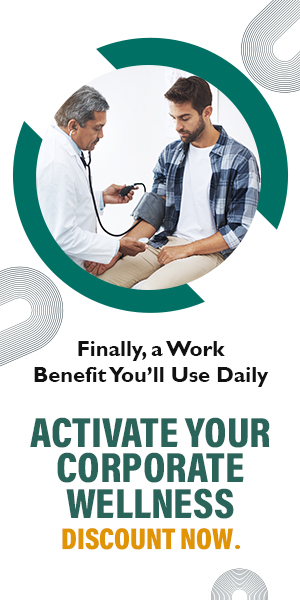Movement
5 Commonly Neglected Muscles to Strengthen
Strong muscles are important for everyone, not just athletes. From joint stability to balance and coordination, they play a crucial role in many processes. Find out how you can strengthen these neglected muscles and more.

Many of us have heard of traditional strength training, but how many of us have heard of isolated muscle training? Traditional strength training builds and strengthens an individual’s bigger muscle groups, such as the gluteus maximus. Isolated muscle training, on the other hand, can help strengthen and build smaller muscles, such as the triceps and gluteus medius.
Not all muscles in the body are made equally. Given the numerous muscles in the body, it's natural that some may be weaker than others, leading to imbalances and potential injuries. This is particularly evident for individuals whose job requires prolonged hours of sitting such as desk workers. The right way to address the weaker ones is by exercising and strengthening them. Also, muscle pains and injuries can be neglected by the paying right attention to the neglected muscles. Neglected muscles can lead to issues like pulled hamstrings, lower back pain, knee pain, strains, and muscle tears. The key lies in preventing these problems with the right attention to often overlooked muscles.
When it comes to fitness, the options can be overwhelming. From strength training to cardiovascular exercise, mobility, flexibility, and functional training, the choices are vast. Deciding on the frequency and intensity of workouts adds another layer of complexity. Balancing fitness goals, experience, injury history, and scheduling creates challenges in planning effective workouts.
Additionally, neglecting crucial muscles can hinder fitness goals and invite injuries. Most of the 600+ muscles in the human body, though small, play vital roles in sports performance and orthopaedic health. Unfortunately, numerous muscles are often overlooked during exercises and sport-specific training. This oversight is a major reason for unmet goals, underperformance, and increased injury risks.
Need all your wellness solutions in one place? A whole new world awaits just a click away.
Here are the 5 commonly neglected muscles to strengthen and address using the right sets of exercises.
Gluteus Medius
(Buttocks Muscles)
While smaller than the gluteus maximus, the gluteus medius plays a crucial role in hip, pelvis, and knee stability. Positioned on the side of the pelvis, it is essential for lateral stability, coordination, and power. Weakness in the gluteus medius can be evident when knees turn inward during activities like squatting or lunging, potentially causing knee pain and injuries. Strengthening this muscle can help counter the tendency for knees to collapse inward, although structural factors like Q angle and foot overpronation may also contribute to this issue.
Particularly vital for controlling lateral movements, the gluteus medius is significant in sports like tennis, soccer, baseball, hiking, running, and volleyball. A weakened gluteus medius on one side can alter pelvic tilt and impact the muscles and joints in the hip, pelvis, and lower back, requiring compensation in movement patterns.
Exercises: Side-lying leg lifts, clamshells, and hip abduction exercises.
Gluteus Maximus
(Buttock Muscles)
Among the frequently overlooked muscle groups, the glutes stand out as vital for proper biomechanics and peak sports performance. Consisting of three muscles—the gluteus maximus, gluteus medius, and gluteus minimus—they are linked to the spine, making weak glutes a potential cause of back pain and injury.
The gluteus maximus, a powerful muscle, acts as an anti-gravity force, facilitating movements like sitting and jumping. When neglected, it forces other muscles, such as the lower back musculature (QL, Iliopsoas, and Lumbar Erectors), to overwork, leading to lower back pain and spasms. Additionally, excessive strain on the lower back and facet joints may result from the increased torque on intervertebral discs. Neglecting the Gluteus Maximus also raises the risk of chronic hamstring strains and knee pain, as both the Glutes and Hamstrings contribute to hip extension crucial in running-intensive sports.
In activities like jumping, running, and climbing, the gluteus maximus collaborates with quad muscles. If the gluteus maximus is underactive, the quads bear additional stress, potentially causing strains and increasing knee joint pressure.
Exercises: Squats, lunges, hip thrusts, and deadlifts.
Transversus Abdominis
(Abdominal Muscles)
The TVA is a crucial muscle for keeping the lower spine stable. It's the deepest among the four main abdominal muscles and wraps around the belly like a belt. Its fibres run sideways, allowing it to pull the abdominal contents together from front to back and back to front. Connected to the side of the lumbar vertebrae, it directly contributes to spine stability and abdominal strength.
Activating the TVA is challenging for a few reasons. Firstly, it's a thin, deep muscle, making it hard to sense when it contracts. Unlike larger muscles, it doesn't create noticeable movements or stretches. Moreover, it tends to deactivate when other abdominal and lower back muscles are overactive, creating a cycle of disengagement and neglect.
While pilates commonly includes exercises to engage the TVA, doing them without proper guidance might not be enough. Contracting the TVA can be tricky and subtle, causing frustration. However, learning to do so can bring valuable rewards, especially for those with a history of low back issues, impacting performance, comfort, and appearance.
Exercises: Plank variations, pelvic tilts, and vacuum exercises
Rhomboids
(Upper Back Muscles)
Not strengthening the upper back muscles, called rhomboids, can cause problems. Even if your shoulders and chest muscles are strong, ignoring the rhomboids raises the chance of shoulder issues, especially when doing overhead or throwing movements. Weak rhomboids may lead to ongoing back pain. Also, these muscles help keep your posture and shoulder alignment right. If you only focus on the shoulders and chest, you upset the balance in your shoulders. This not only increases the chance of shoulder problems but also affects how well your shoulders work and stay steady. So, doing exercises for your rhomboids is important to avoid discomfort, improve posture, and keep your shoulders healthy.
Exercises: Scapular retraction exercises, such as band pull-aparts and face pulls.
Serratus Anterior
(Middle Back Muscles)
The serratus anterior is a strong muscle that connects to the side of your ribs and the inner front part of your shoulder blades. It's super important in keeping your shoulder blades from tipping forward too much. When they do tip forward a lot, it can mess up how your chest and shoulder muscles work.
Making the serratus anterior stronger involves doing specific exercises, and that's one reason why people often forget about it during workouts. It's a bit tricky to feel the seratus anterior working because the nerves connected to it aren't as strong as those for other nearby muscles. Also, it's not connected to the arm bones, so regular arm exercises like push-ups and bicep curls won't boost it directly. Even though it needs some extra attention and patience, strengthening the Serratus Anterior can really help with shoulder injuries, posture, and upper body strength.
Exercises: Scapular punches, wall slides, and push-ups.
Recognising and addressing the importance of often neglected muscles is integral to achieving a well-rounded and balanced fitness routine. Strengthening these overlooked muscle groups, such as the rhomboids, serratus anterior, and transverse abdominis, not only enhances overall strength but also plays a crucial role in preventing injuries, improving posture, and optimizing functional movements.
Need all your wellness solutions in one place? A whole new world awaits just a click away.
Looking for an exclusive and unique experience, expert staff, and unparalleled member services? Come join us at URLife Studios! We offer a comprehensive range of wellness services that promote optimum well-being. We are a trusted source for unique holistic health and pregnancy care workshops. Our physiotherapists design customised rehab programs based on health conditions.
At UR.Life Studios, we offer a complete multi-disciplined approach to fitness and well-being. The URLife Studio is a luxe wellness oasis, combining sleek modern design, lavish amenities, state-of-the-art equipment and personalised wellness programs.
- Yoga
- Kickboxing
- Pool and Bollywood aerobics
- Pregnancy care workshops
- Customised physiotherapy
- Spa
- Garden Cafe
- Women’s wellness program
EXPLORE MORE
Instead of chasing long workouts, micro-movement shifts the focus from “Did I work out today?” to “Did I move often enough today?”
Pressed for time but craving results? These high-impact exercises burn maximum calories in minimum time, when done right.
Simple, practical fitness advice to help you feel stronger, healthier, and more consistent in 2026.
Callisthenics isn’t about flashy Instagram moves or avoiding the gym. According to celebrity fitness and lifestyle coach Krishna Sadvale, it’s one of the most practical ways to build strength, control, and confidence in your own body.






.jpg)

.jpg)
.jpg)
